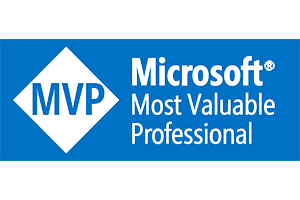I never really do opinion posts, but when I started writing this.. text just kept coming.. enjoy 🙂 So the word is officially out. Windows Server Software-Defined (WSSD) is going to be rebranded to Azure Stack HCI for Windows Server 2019. When I first heard about it I was, probably just like you, surprised and […]
Tag: Storage Spaces Direct
Align VMs with Storage
With Storage Spaces Direct, every Metadata / write IO is redirected to the node who owns the Cluster Shared Volume. If you’re using NTFS the volume will be in “Block Redirected Mode”, if ReFS is used the volume will be in “File System Redirected Mode”. You can see this with Powershell; Get-ClusterSharedVolumeState. More info on […]
Storage Spaces Direct in Azure – Performance
Starting this blog with questions: How do you deploy a highly available fileserver in Azure? Do you count on the SLA (99.9%) of Azure when using premium storage, so doing a single fileserver? How does it perform? In this post I’m diving in on Storage Spaces Direct in Azure, giving a few guidelines but also […]
Storage Spaces Direct – Cache Disk Status
Storage Spaces Direct can make use of cache disks if you have provided SSDs or NVMe SSDs in your nodes. Normally the capacity disks are bound to cache disks round-robin, see the official Microsoft doc here. If you suspect or see that one node is not getting the right performance numbers you might wonder if […]
Windows Server 2016 Networking – Part 3- Optimizing Network settings
In the previous parts we’ve configured our network infrastructure with DCB and set QoS policies to ensure traffic bandwidth. But there is more! In this part I’m going to shown known and unknown tips and tricks that optimizes your network infrastructure.
Windows Server 2016 Networking – Part 1- RDMA, DCB, PFC, ETS, etc
In this multi-part blog series I’m going to try to clear some fog around the networking parts needed in Windows Server 2016, especially when using Storage Spaces (Direct). I’ll be touching multiple areas, things that were new to me (I’m not a network guy) such as DCB and and PFC, but also recommendations on the […]
Windows Server 2016 Networking – Multiple DCB priorities
When configuring DCB on Windows Server 2016, you can create policies to tag specific traffic with a specific priority to let DCB handle the right QoS. For more info how this works, please see this blog series: https://www.darrylvanderpeijl.com/windows-server-2016-networking-rdma-dcb-pfc-ets-etc/ When you have multiple types of traffic that you want to separate into DCB priorities, e.g. Storage and […]
Storage Spaces Direct Needs Rebalance
When you write or delete a lot of data in your storage pool it could be that your volumes end up with the operational status of “Needs Rebalance” This operation needs to be executed by the Administrator (Yes, i’m pointing at you right now) when your disks need a rebalance. You can use the following […]
No disks with supported bus types found to be used for S2D
I had some HP DL380’s to test Storage Spaces Direct (S2D) and walked into the following error: Enable-ClusterStorageSpacesDirect : No disks with supported bus types found to be used for S2D At line:1 char:1 + Enable-ClusterStorageSpacesDirect + ~~~~~~~~~~~~~~~~~~~~~~~~~~~~~~~~~ + CategoryInfo : ObjectNotFound: (MSCluster_StorageSpacesDirect:root/MSCLUSTER/…ageSpacesDirec t) [Enable-ClusterStorageSpacesDirect], CimException […]
Resize Storage Spaces Direct Volume
In this blog post I will show you how to resize a Storage Space AKA virtual disk based on Storage Spaces Direct. The first thing is to understand that Multi-Resilient volumes are created differently comparing to a Parity or Mirror volume. A Multi-Resilient volume makes use of two tiers instead of one and therefore when expanding […]


